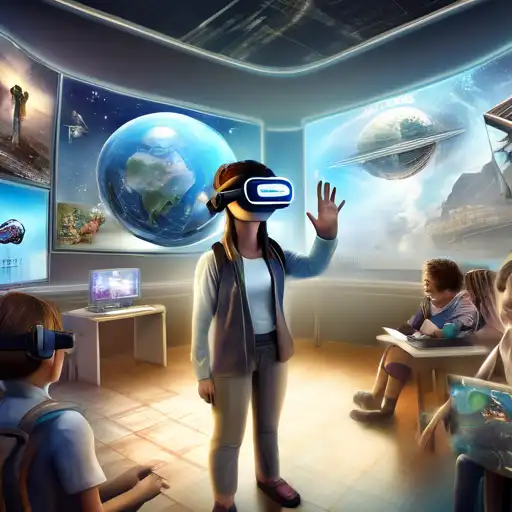Introduction to Virtual Reality in Education
Virtual Reality (VR) is rapidly transforming the educational landscape, offering immersive learning experiences that were once unimaginable. This technology enables students to explore historical sites, dissect virtual frogs, or even travel through space, all from the safety of their classroom. The potential of VR in education is boundless, providing a dynamic and interactive way to engage students.
The Benefits of VR in Learning
VR in education offers numerous advantages, including enhanced engagement, improved retention rates, and the ability to simulate real-world scenarios. Students can practice surgeries, language immersion, or mechanical repairs in a risk-free environment. This hands-on approach not only makes learning more enjoyable but also more effective.
Challenges and Considerations
Despite its benefits, integrating VR into education comes with challenges. The cost of VR equipment and the need for technical support can be prohibitive for some institutions. Additionally, there's the question of content quality and the need for curriculum-aligned VR experiences. However, as technology advances, these hurdles are becoming increasingly manageable.
Future Prospects of VR in Education
The future of VR in education looks promising, with developments in AI and machine learning further enhancing VR experiences. As VR becomes more accessible, we can expect to see its widespread adoption in schools and universities worldwide, making education more interactive and personalized than ever before.
How to Implement VR in Your Classroom
For educators interested in incorporating VR into their teaching, start with simple, cost-effective solutions like Google Cardboard. Explore VR content that aligns with your curriculum, and consider partnering with VR content providers. Remember, the goal is to enhance learning, not to replace traditional teaching methods.
Virtual Reality is not just a tool for entertainment; it's a powerful educational resource that can transform how we teach and learn. By embracing VR, educators can provide students with unparalleled learning experiences that prepare them for the future.
For more insights on innovative learning technologies, check out our articles on EdTech Trends and The Digital Classroom.
